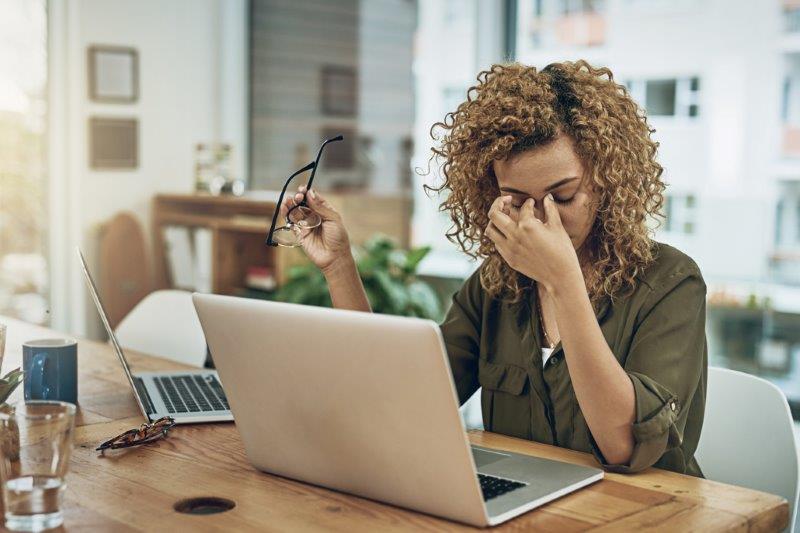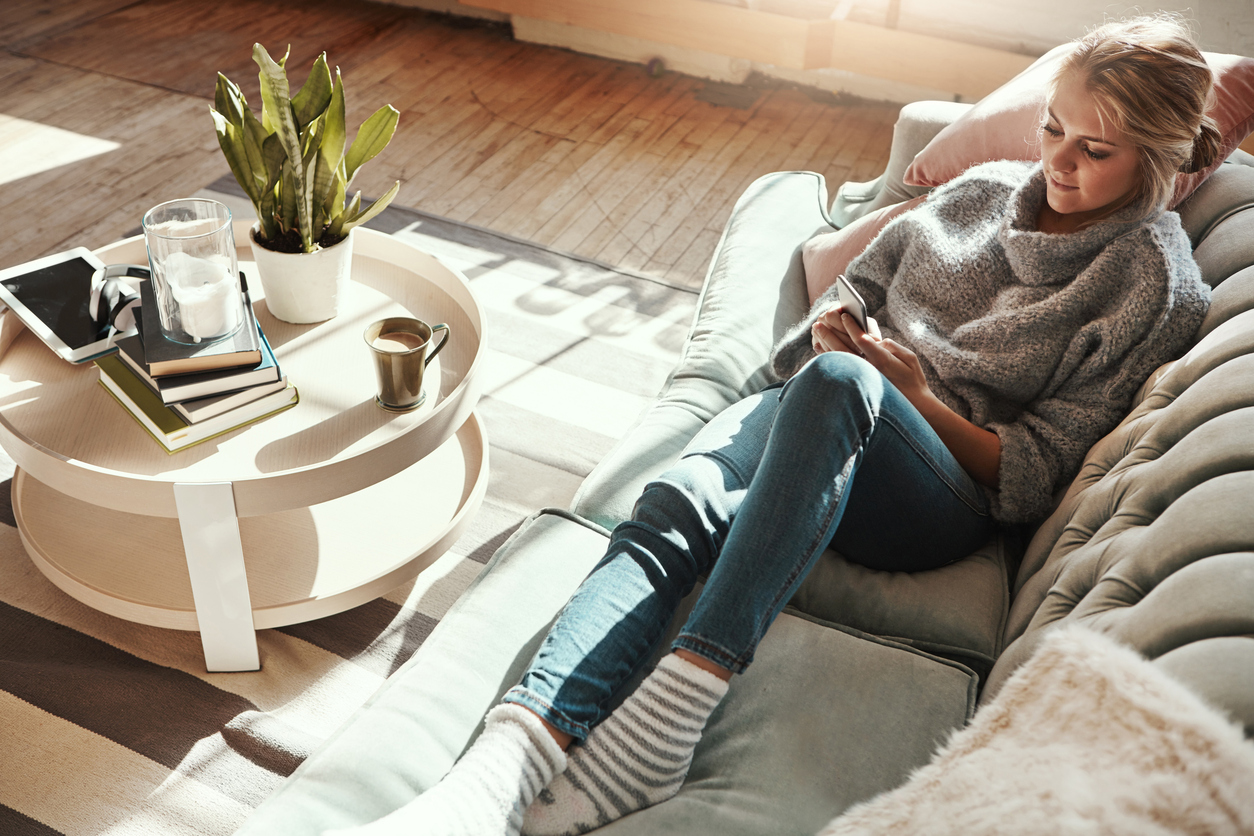-
According to Ernst & Young, on average, Australians spend 6.8 hours a day on digital devices, with smartphones being the primary point of connection1. It also comes as no surprise, we are checking our phones more often with 70% of people surveyed in Deloitte’s Mobile Consumer Survey admitting to using their phone during meal times with family and friends2.
We rely on our devices to access instant information, whether at home, in the office or in the palm of your hand. We log so much screen time; it can often be associated with tired eyes, blurry vision, or headaches, which collectively is referred to as digital eye strain.
But what’s really causing these symptoms? Digital devices emit blue light which scatters after entering our eyes. This causes our eyes to work overtime trying to focus the scattered light, which can lead to digital eye strain symptoms3.
What is blue light?
The visible light spectrum makes up a section of the electromagnetic spectrum which is visible to the human eye. You may commonly see the visible light spectrum represented as the colours of the rainbow – red, orange, yellow, green, blue and indigo – making up a range of wavelengths we use for human vision.
Blue light is defined as wavelengths from 400-500nm. Simply put, blue light helps to light up the world we see every day.
The topic of blue light has been much spoken about over the past six years, not only due to the increased prevalence of digital eye strain4 but also with a societal shift towards a 24/7 digital life, in fact, Australia is one of the most connected populations in the world1.
Tips to combat digital eye strain5
If you want to prevent digital eye strain, here's our top tips:
1. Get an eye exam
A regular eye exam every three years should help you stay on top of your eye health and also give you the chance to chat to your Optometrist about the best options to help reduce eye strain, including lenses with coatings that reflect and absorb blue light.
While your optometrist visit should usually be covered by Medicare - if you have private health insurance with extras and you need glasses, you can use your cover to help with the cost of glasses. In fact, Medibank members with eligible extras get 100% back on optical items (up to your annual limit) at any recognised provider. Some glasses lens coatings and contact lenses are excluded and waiting periods apply.~
2. Observe the 20/20/20 rule
Give your eyes a break every 20 minutes and spend 20 seconds looking at something at least 20 feet away (6 metres).
3. Maintain your digital distance
Find a comfortable working distance from your screen.
4. Lower your screen’s brightness
Turn down the brightness level of device screens to reduce the amount of blue light exposure, especially during the evening hours.
5. Limit screen time, if possible
The number of times we look at, along with the amount of time we spend looking at device screens add up which can affect symptoms of digital eye strain. Try to limit your screen time when at home.
Talk to your optometrist if you are experiencing any symptoms of digital eye strain and how you can reduce your blue light exposure.
Is too much screen time giving you the blues?

Things you should know
~Excludes Healthy Living Extras and select products that are no longer available for sale (for more information check your cover summary or check this page). Applies to prescription glasses and select contact lenses. Some glasses lens coatings and contact lenses are excluded. To find which specific items are included or excluded, call us on 132 331. 6 month waiting period applies.
1. Ernst & Young, Digital Australia: State of the Nation 2017, https://digitalaustralia.ey.com/, Accessed 2 June 2018
2. Deloitte, Smart everything, everywhere; Mobile Consumer Survey 2017. The Australian Cut, http://landing.deloitte.com.au/rs/761-IBL-328/images/tmt-mobile-consumer-survey-2017_pdf.pdf, Access 2 June 2018
3. Gary Morgan, VSP Optics, The Evolving Science of Blue Light, http://www.techshieldblue.com/white-paper1.html , Accessed 2 June 2018
4. The Vision Council, Eyes Overexposed: The Digital Device Dilemma. 2016 Digital Eye Strain Report, https://visionimpactinstitute.org/wp-content/uploads/2016/03/2016EyeStrain_Report_WEB.pdf , Accessed 2 June 2018
5. Jace Duval, VSP Blog, Should You Be Concerned About Blue Light Exposure? (Infographic), https://vspblog.com/blue-light-infographic/, Accessed 2 June 2018


